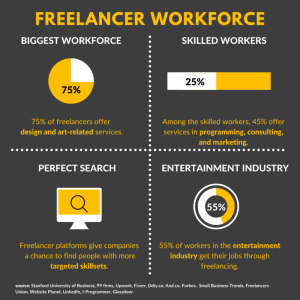Human-Centric Workplaces and Employee Well-being

In today’s rapidly evolving world of work, the traditional paradigms of productivity and profit are undergoing a significant transformation. Forward-thinking organizations are increasingly recognizing that their most valuable asset isn’t just technology or capital, but their people. This realization is giving rise to the concept of the “human-centric workplace” – an environment meticulously designed to prioritize the well-being, needs, and experiences of employees. This isn’t merely about offering trendy perks or superficial benefits; it’s a fundamental shift in organizational philosophy that recognizes the intrinsic link between employee well-being and business success.
The human-centric workplace transcends the conventional focus on output and efficiency, instead placing emphasis on creating a supportive and empowering ecosystem where individuals can thrive both professionally and personally. It acknowledges that employees are not simply cogs in a machine but complex individuals with diverse needs, aspirations, and challenges. By fostering a culture of empathy, respect, and genuine care, organizations can unlock a wealth of benefits, ranging from enhanced productivity and innovation to improved retention and a stronger employer brand.
The Pillars of a Human-Centric Workplace:
Building a truly human-centric workplace requires a holistic approach that touches upon various aspects of the employee experience. Several key pillars underpin this philosophy:
1. Prioritizing Physical and Mental Well-being:
At its core, a human-centric workplace recognizes the fundamental importance of employee health and well-being. This goes beyond simply complying with safety regulations and extends to actively promoting a culture of wellness.
- Ergonomics and Comfort: Providing comfortable and ergonomically designed workspaces is crucial for preventing physical discomfort and long-term health issues. Adjustable desks, supportive chairs, and proper lighting can significantly impact employee comfort and productivity.
- Access to Wellness Resources: Offering resources such as on-site fitness facilities, gym memberships, mindfulness programs, and employee assistance programs (EAPs) demonstrates a commitment to both physical and mental health.
- Flexible Work Arrangements: Recognizing the diverse needs and circumstances of employees, offering flexible work options such as remote work, hybrid models, and flexible hours can significantly reduce stress and improve work-life balance. This autonomy empowers employees to manage their time and responsibilities in a way that suits them best.
- Promoting Mental Health Awareness: Creating a culture where mental health is openly discussed and destigmatized is paramount. Providing mental health support, training managers to recognize signs of burnout, and fostering a supportive environment can make a significant difference in employee well-being.
- Encouraging Breaks and Rest: Discouraging presenteeism and actively encouraging employees to take regular breaks and utilize their vacation time is essential for preventing burnout and promoting rejuvenation.
2. Fostering a Culture of Inclusion and Belonging:
A human-centric workplace is inherently inclusive, valuing the diversity of its workforce and creating an environment where everyone feels respected, valued, and a sense of belonging.
- Diversity and Inclusion Initiatives: Implementing comprehensive diversity and inclusion strategies that address various dimensions such as gender, ethnicity, sexual orientation, age, and disability is crucial. This includes equitable hiring practices, inclusive leadership development programs, and fostering employee resource groups.
- Creating Psychological Safety: Cultivating an environment where employees feel safe to express their opinions, take risks, and even make mistakes without fear of judgment or retribution is essential for fostering innovation and open communication.
- Promoting Collaboration and Teamwork: Designing workspaces and implementing strategies that encourage collaboration, knowledge sharing, and teamwork can foster a sense of community and shared purpose.
- Actively Seeking Employee Feedback: Regularly soliciting feedback through surveys, focus groups, and one-on-one conversations demonstrates that employee opinions are valued and acted upon. This fosters a sense of ownership and empowers employees to contribute to shaping the workplace culture.
- Celebrating Diversity and Individuality: Recognizing and celebrating the unique contributions and perspectives of each employee strengthens the sense of belonging and reinforces the value of diversity.
3. Empowering Growth and Development:
A human-centric workplace invests in the growth and development of its employees, recognizing that their personal and professional advancement benefits both the individual and the organization.
- Learning and Development Opportunities: Providing access to training programs, workshops, mentorship opportunities, and tuition reimbursement demonstrates a commitment to employee growth and skill development.
- Career Pathing and Advancement: Clearly defined career paths and opportunities for internal advancement motivate employees and foster a sense of long-term commitment.
- Providing Meaningful Work: Connecting employees to the purpose and impact of their work can significantly enhance engagement and motivation. Clearly communicating the organization’s mission and how individual contributions contribute to the bigger picture is crucial.
- Autonomy and Empowerment: Providing employees with autonomy over their work and empowering them to make decisions fosters a sense of ownership and responsibility.
- Regular Performance Feedback and Coaching: Providing constructive and regular feedback, coupled with coaching and support, helps employees identify areas for growth and development.
4. Embracing Flexibility and Work-Life Integration:
Recognizing that employees have lives and responsibilities outside of work is a cornerstone of a human-centric approach.
- Flexible Work Arrangements (Revisited): Offering a range of flexible work options, as mentioned earlier, is crucial for supporting work-life integration.
- Generous Leave Policies: Providing adequate paid time off for vacation, sick leave, parental leave, and other personal needs demonstrates a commitment to employee well-being and allows them to manage their personal lives effectively.
- Support for Family Responsibilities: Offering resources such as childcare assistance or flexible scheduling options can help employees balance their work and family responsibilities.
- Promoting a Culture of Trust: Flexibility thrives in a culture of trust, where managers trust employees to manage their time and responsibilities effectively, regardless of where or when they work.
- Encouraging Boundaries: Promoting healthy boundaries between work and personal life and discouraging excessive work hours is essential for preventing burnout.
5. Designing Physical Spaces with People in Mind:
The physical environment of the workplace plays a significant role in employee well-being and productivity.
- Natural Light and Green Spaces: Access to natural light and the incorporation of plants and green spaces have been shown to improve mood, reduce stress, and enhance creativity.
- Comfortable and Functional Workstations: As mentioned earlier, ergonomic furniture and well-organized workspaces contribute to physical comfort and efficiency.
- Collaboration and Social Spaces: Providing dedicated areas for collaboration, informal meetings, and social interaction fosters a sense of community and strengthens relationships.
- Quiet Zones and Focus Areas: Recognizing that different tasks require different environments, providing quiet zones and focus areas allows employees to concentrate without distractions.
- Accessibility and Inclusivity: Ensuring that the physical workspace is accessible to all employees, regardless of their abilities, is a fundamental aspect of inclusivity.
The Tangible Benefits of a Human-Centric Approach:
Investing in a human-centric workplace is not just a matter of ethics; it’s a smart business strategy that yields significant tangible benefits:
- Increased Productivity and Engagement: When employees feel valued, supported, and have their needs met, they are more likely to be engaged, motivated, and productive.
- Improved Employee Retention: A positive and supportive work environment reduces employee turnover, saving the organization significant costs associated with recruitment and training.
- Enhanced Innovation and Creativity: When employees feel psychologically safe and empowered, they are more likely to share ideas, take risks, and contribute to innovation.
- Stronger Employer Brand: Organizations that prioritize employee well-being develop a strong employer brand, making them more attractive to top talent.
- Reduced Absenteeism and Presenteeism: A focus on well-being can lead to fewer sick days and reduced presenteeism (being physically present but not fully productive due to illness or stress).
- Improved Customer Satisfaction: Happy and engaged employees are more likely to provide excellent customer service, leading to increased customer satisfaction and loyalty.
- Stronger Financial Performance: Ultimately, the benefits of a human-centric workplace translate into improved overall business performance and profitability.
Moving Towards a Human-Centric Future:
The shift towards human-centric workplaces is not a fleeting trend but a fundamental evolution in how we view work and the employee-employer relationship. Organizations that embrace this philosophy will be better positioned to attract, retain, and motivate top talent, foster innovation, and thrive in the long run.
Practical Steps for Implementing a Human-Centric Approach:
Implementing a human-centric approach requires a conscious and ongoing effort. Here are some practical steps organizations can take:
- Leadership Buy-in: Securing commitment and active involvement from leadership is crucial for driving cultural change.
- Employee Listening and Feedback Mechanisms: Establish regular channels for gathering employee feedback and actively act upon it.
- Investing in Training and Development: Equip managers with the skills and knowledge to lead with empathy and support their teams effectively.
- Reviewing and Updating Policies and Practices: Ensure that policies and practices align with the principles of a human-centric workplace.
- Measuring and Tracking Progress: Establish metrics to track the impact of human-centric initiatives on employee well-being, engagement, and business outcomes.
- Continuous Improvement: Regularly evaluate and adapt strategies based on employee feedback and evolving needs.
Conclusion:
The human-centric workplace is not just a desirable ideal; it’s a necessity in today’s competitive landscape. By prioritizing employee well-being, fostering a culture of inclusion and belonging, empowering growth, embracing flexibility, and designing physical spaces with people in mind, organizations can create environments where employees thrive. This investment in people yields significant returns, driving productivity, innovation, and ultimately, long-term success. The future of work is human, and organizations that recognize and embrace this fundamental truth will be the ones that flourish in the years to come. It’s time to move beyond superficial perks and cultivate workplaces where humans are truly at the center.











Post Comment